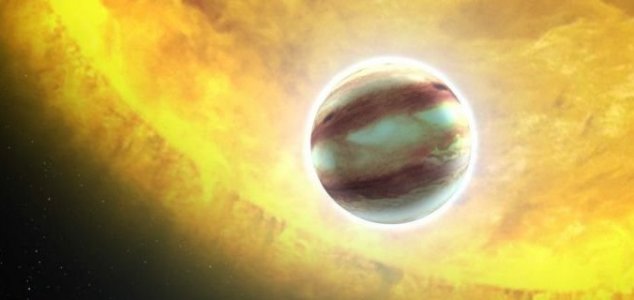Space & Astronomy
August 16, 2018 · 5 comments
5 comments

The planet is extraordinarily hot. Image Credit: NASA; ESA; G. Bacon, STScI
The planet was recently observed by a team of astronomers who used the Galileo National Telescope in La Palma, Canary Islands to view it as it passed in front of its host star.
"The temperatures are so insane that even though it is a planet it has the atmosphere of a star," said study co-author Professor Kevin Heng from the University of Bern.
"The main lesson that exoplanets are teaching us is that we can't just look in the solar system."
"There are really weird things out there."
While this particular planet is probably one of the worst possible places to look for evidence of life, the techniques used to observe it will certainly play an important role in seeking out life on other worlds.
"These hot planets are a testing ground for techniques that we will use when the really interesting planets start to show up over the next few years," said Heng.
Source: The Guardian | Comments (5)
Planet is so hot that even metal evaporates
By T.K. RandallAugust 16, 2018 ·
 5 comments
5 comments
The planet is extraordinarily hot. Image Credit: NASA; ESA; G. Bacon, STScI
The extrasolar planet known as Kelt-9b is so hot that its atmosphere contains vaporized iron and titanium.
The hellish world, which is situated 650 light years away in the constellation Cygnus, is 30 times closer to its star than the Earth is to the Sun and sees surface temperatures exceeding 4,000C.The planet was recently observed by a team of astronomers who used the Galileo National Telescope in La Palma, Canary Islands to view it as it passed in front of its host star.
"The temperatures are so insane that even though it is a planet it has the atmosphere of a star," said study co-author Professor Kevin Heng from the University of Bern.
"There are really weird things out there."
While this particular planet is probably one of the worst possible places to look for evidence of life, the techniques used to observe it will certainly play an important role in seeking out life on other worlds.
"These hot planets are a testing ground for techniques that we will use when the really interesting planets start to show up over the next few years," said Heng.
Source: The Guardian | Comments (5)

The Unexplained Mysteries
Book of Weird News
AVAILABLE NOW
Take a walk on the weird side with this compilation of some of the weirdest stories ever to grace the pages of a newspaper.
Click here to learn more

Support us on Patreon
BONUS CONTENTFor less than the cost of a cup of coffee, you can gain access to a wide range of exclusive perks including our popular 'Lost Ghost Stories' series.
Click here to learn more
Ancient Mysteries and Alternative History
Ghosts, Hauntings and The Paranormal
United States and the Americas
UK and Europe
Total Posts: 7,779,933 Topics: 325,660 Members: 203,950
Not a member yet ? Click here to join - registration is free and only takes a moment!
Not a member yet ? Click here to join - registration is free and only takes a moment!


































Please Login or Register to post a comment.